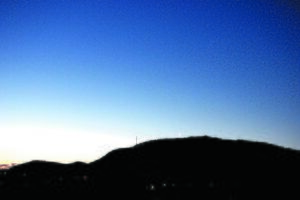AN.TA.ŠU.UR.RA
AN.TA.ŠU.UR.RA (with variants AN.TA.ŠU2.UR.RA, AN.TA.ŠUR.RA) refer to bright phenomena in ancient Mesopotamia.
Dictionary (Provenance of the term)
Kurtik with Hilder, Hoffmann, Horowitz, Kim
NV 10 rev. gives two variant readings AN.TA.ŠU.UR.RA and AN.TA.ŠU2.UR.RA, both paired with AN.TA.GUB. LBAT 1502 has AN.TA.GUB with AN.TA.ŠUR.RA. As the sign ŠUR is the same as SUR, this means that the two terms antasurra and antašurra cannot be completely differentiated. However, we take the examples in NV 10 and LBAT 1502 to refer to a group of stars that tentatively have been identified as stars that appear at dusk as to opposed to AN.TA.GUB.BA that appear at dawn (see Horowitz 2014: 217-219).
- Variant: MUL AN.TA.ŠU2.UR.RA, AN.TA.ŠU.UR.RA "Star flashing overhead"; a special category of stars which were visible in the east immediately after sunset, marking the beginning of the night [ASM 55-56; Donbaz-Koch 1995]. ŠU2 = rabû, sunset (CAD R 50-51 rabû B).
- var. readings: (MUL) AN.TA.ŠUR.RA; = ṣāriru "sparkling (flashing) star"; term for meteors or "shooting stars" [BPO 2, 10; G. 36]; mulAN.TA.ŠUR.RA = kakkab eliš ṣāriru "the star above flashing" [Chadwick 1993, 164].
| Sources | Identifications |
|---|---|
a36. (MUL) AN.TA.ŠUR.RA (22), |
|
Text Nv. 10.
|
AN.TA.ŠU2.UR.RA are categories of stars without any specific identification |
LBAT 1502 obv.
|
AN.TA.ŠU2.UR.RA are categories of stars without any specific identification |
a34. (MUL) AN.TA.SUR.RA (21), |
|
Lexical texts.
|
in this text "an.ta.sur.ra" is a bright object that cannot be identified |
| "Reports." See. [ARAK, 76 r. 1, 381:1, 4]. | |
"The Great Star List."
|
again, something bright without any specific identification:
These include the Sun-god, the center of the Milky Way Galaxy as seen in PA.BIL.SAG (Sagitarius), or other southern stars. |
additional
II. Identification.
In the texts of Nv. 10 and LBAT 1502, according to Koch's interpretation, the term mulAN.TA.ŠU2.UR/ŠUR.RA = ‘(der) oben aufleuchtende(r) Stern’ refers to stars that rose before sunset, became visible at the end of civil twilight, and set before sunrise in the corresponding month [Koch 1995, 72, 76]; see also [ASM, 55-57].
III. Astrology.
(1) mulAN.TA.SUR.RA ana IM ZI.GA "The shining star for the rising wind." [BPO 2, III 6].
(2) mulAN.TA.SUR.RA ma-diš SA5 A.KAL uṣ-ṣa-pa "The shining star is very red: the flood will increase." [BPO 2, III 6b]; for parallels see. [BPO 2, XIX 1-2 + Parallels; ARAK, 381:1-2].
Historical Dictionaries
| Kurtik (2022) | Gössmann (1950) |
|---|---|
(a36.) (MUL) AN.TA.ŠUR.RA (22)вар.: MUL AN.TA.ŠU2.UR.RA «Звезда, вспыхивающая наверху»; особая категория звезд, которые были видны на востоке непосредственно после захода Солнца, отмечая начало ночи [ASM 55–56; Donbaz–Koch 1995]. I. Источники. Текст Nv. 10. Новоассирийский текст из Ниневии, в котором на каждый месяц приведены созвездия, относящиеся к категории AN.TA.GUB.BA и AN.TA.ŠU2.UR.RA [Donbaz-Koch 1995]. LBAT 1502 obv. Список звезд AN.TA.GUB.BA и AN.TA.ŠUR.RA и соответствующих кульминаций ziqpu-звезд. К категории AN.TA.ŠUR.RA в сохранившейся части таблички отнесены: mulGU, mulA-nu-ni-tu4, mulKU6, mulzi-ba-ni-tu4, dšar2-ur4 и dšar2-gaz, mulKUN.MEŠ(?), mulLUGAL (см. соотв. статьи) [Donbaz–Koch 1995, 75–77]. II. Отождествление. В текстах Nv. 10 и LBAT 1502, согласно интерпретации Коха, термин mulAN.TA.ŠU2.UR/ŠUR.RA = «(der) oben aufleuchtende(r) Stern» относится к звездам, которые восходили перед заходом Солнца, становились видны в конце гражданских сумерек и заходили перед восходом Солнца в соответствующий месяц [Koch 1995, 72, 76]; см. также [ASM, 55–57].||Example | |
(a34.) (MUL) AN.TA.SUR.RA (21)вар. чтения: (MUL) AN.TA.ŠUR.RA; = ṣāriru «Сверкающая (вспыхивающая) звезда»; термин для обозначения метеоров или «падающих звезд» [BPO 2, 10; G. 36]; mulAN.TA.ŠUR.RA = kakkab eliš ṣāriru «Звезда наверху вспыхивающая» [Chadwick 1993, 164]. I. Источники. Лексич. тексты. (1) Одноязычные шумерские списки звезд: [mulan.ta].sur.ra [MSL XI, 133 col. ix 4], mulan.ta.sur.ra [ibid., 143 col. x 25]. (2) Серия Urra XXII: mulan.ta.sur.ra = ṣa-ri-ru [MSL XI, 31 Gap j:a; Weidner 1959–60, VAT 9430:22], mulan.ta.sur.ra = ṣa-ri-ri [SpTU III, 114A v 54; Bloch–Horowitz 2015, 110:311′], а также [ibid., v 30(?)]. EAE. См. [BPO 2, II 2, III 6, 6b, XIX 1–2]. «Рапорты». См. [ARAK, 76 r. 1, 381:1, 4]. «Большой список звезд». (1) mulan.ta.sur.ra = dšullat u dḫaniš «Антасурра = Шуллат и Ханиш», (2) mulan.ta.sur.ra = dutu «Антасурра = Солнце», (3) mulan.ta.sur.ra = me-šiḫ mul «Антасурра = вспышка звезды», (4) mulan.ta.sur.ra = me-šiḫ dpa.bil.sag «Антасурра = Сияние (Вспышка?) Пабилсага» [Mesop.Astrol., App. B:139–142]. II. Отождествление. (1) Метеор, падающая звезда [Chadwick 1993, 164]. (2) Часть созвездия Пабилсаг: [mu]lAN.TA.SUR.RA / mi-ši-iḫ dPA.BIL.SAG «Антасурра = mišḫu Пабилсага» [ARAK, 381:4–5]; возможно, λ Scorpii и ε Sagittarii [Weidner 1959–60, 107]. См. m26 mišiḫ dPA.BIL.SAG. (3) Антасурра — Меркурий внутри Пабилсага; см. u08UDU.IDIM.GU4.UD, IV 20. (4) dšullat u dḫaniš ― две звезды в созвездии Центавра, см. h03dḪaniš. См. также a36AN.TA.ŠUR.RA. III. Астрология. (1) mulAN.TA.SUR.RA ana IM ZI.GA «Сверкающая звезда для восхода ветра» [BPO 2, III 6]. (2) mulAN.TA.SUR.RA ma-diš SA5 A.KAL uṣ-ṣa-pa «Сверкающая звезда очень красная: половодье уcилится» [BPO 2, III 6b]; параллели см. [BPO 2, XIX 1–2 + Parallels; ARAK, 381:1–2]. |
Example |
